Plant Zucchini: Complete Guide [Images + Step by Step]
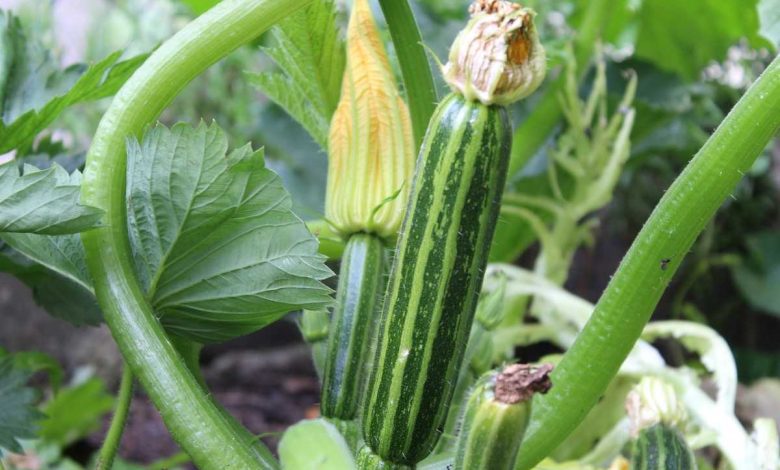
Important Points when Sowing Courgettes:
- When? During spring. Between May and April.
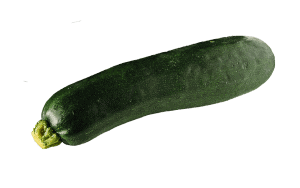
- Where? Place of maximum sun exposure. It does not withstand low temperatures well.
- Harvest time? One month and a half. Super fast growth.
- How do we prepare the land? We plow, remove weeds, slightly moisten. Loose and drain well.
- How do we water? Ideal drip. It needs a lot of water, without flooding.
- Favorable associations? Corn, beans, cabbage, lettuce, radish, Swiss chard, and rocket.
- Unfavorable associations? Cucumber, watermelon, melon, pumpkin, nasturtium or tomatoes.
- Plagues and diseases? aphid, spider mite, thrips,whitefly, mildew, powdery mildew.
Did you know? Zucchini is a fast growing plant.
Zucchini is one of the most appreciative crops out there. Why?
- It is not demanding with the soil conditions to develop.
- It grows fast.
- Once it starts to bear fruit, it’s spectacular! You can get to give weekly.
In addition to being a fairly noble and abundant crop, it is also one of the ones that brings the greatest benefits to human beings.
So do not think too much about it when trying to grow zucchini in your garden or urban garden.
In this article we tell you everything you need to know to grow zucchini efficiently.
What do we need to plant zucchini?
When should you grow zucchini?
They need high temperatures and good lighting for their cultivation. For this reason, it is recommended to sow during the spring, preferably inApril and May. Before, if it is sown in a seedbed.
Where should we plant the courgettes?
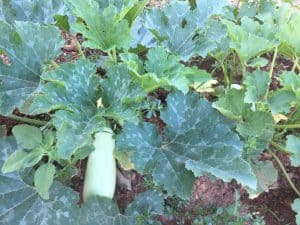 It is a crop of high climates, very little tolerant to low temperatures.
It is a crop of high climates, very little tolerant to low temperatures.
require between10 and 12 hours of light.
The optimum soil temperature for germination is between 20 and 25 ºC.
Below 10ºC its development is paralyzed and above 40ºC imbalances in plants and temperatures begin to appear.
How often should zucchini be watered?
Due to its high water content, zucchini require a lot of moisture.
Irrigation must be frequent and regular, requiring more frequent irrigations with the appearance of the first fruits.
It is essential to avoid waterlogging,They are very harmful, since they favor the development of diseases and can cause root suffocation.
On the contrary, a considerable lack of humidity can cause dehydration of the tissues, poor fertilization and, finally, a decrease in production.
How do we prepare the land?
 Zucchini is not too demanding on soils, and adapts easily to all types of substrates, although it prefers those withloamy texture, deep and well drained.
Zucchini is not too demanding on soils, and adapts easily to all types of substrates, although it prefers those withloamy texture, deep and well drained.
The soil, in addition, must contain enough organic matter, since it is very demanding in terms of nutrients.
The optimal pH ranges between 5.6 and 7.0
It is a moderately tolerant species to the salinity of the soil and irrigation water, but if the concentration of salts is very high, the plants find it very difficult to absorb the water.
What are the most favorable associations for the cultivation of courgette?
They pair well with corn, beans, cabbage, lettuce, radish, Swiss chard, tomato, and rocket.
They do not get along well with potatoes and, in general, with vegetables of the same family (fruit vegetables) such as cucumber, watermelon, melon, pumpkin or tomatoes, as they compete for sun, water and nutrients.
How to plant zucchini step by step
Clear the ground
 It removes weeds and remains of previous crops and all kinds of residues to ensure that your courgettes receive the right amount of nutrients.
It removes weeds and remains of previous crops and all kinds of residues to ensure that your courgettes receive the right amount of nutrients.
All plants must be pulled out by the roots to prevent them from growing back.
Remove the soil with a rake so that it is well ventilated.
prepare the ground
 Moisten the soil before planting zucchini, this way you will favor the root system of your zucchini. In addition, by moistening the soil, you reduce the risk of expelling the seeds as a result of the force of the water.
Moisten the soil before planting zucchini, this way you will favor the root system of your zucchini. In addition, by moistening the soil, you reduce the risk of expelling the seeds as a result of the force of the water.
Fertilize the soil. Mix the fertilizers to a depth of 5 centimeters.
Put the seeds in the ground
To do this, create small mounds of soil and plant 2-3 seeds 3-5cm deep. When you’re done, cover them lightly.
Being a plant that requires a lot of space, it isrecommended to keep a distanceof, at least, 50 cm each mound.
Select the healthiest and strongest seedlings
 The seeds will germinate in a few days. If more than one seed has germinated in each hole, keep the strongest one. To do this, do not pull the weak one, as you can damage the leaves. A simple pruning at ground level is sufficient.
The seeds will germinate in a few days. If more than one seed has germinated in each hole, keep the strongest one. To do this, do not pull the weak one, as you can damage the leaves. A simple pruning at ground level is sufficient.
pollinate your plants
One of the peculiarities of zucchini plants is that the same individual has male and female flowers, these being the majority, so at least two plants will be needed for pollination to occur and, therefore, the formation of the fruit.
Prune your plants
It will be necessary to carry out a pruning to limit the excessive growth of the bush and favor the production of fruits.
Likewise, throughout the life cycle you must remove the leaves in poor condition.
Occasionally you will have to do a flower cleaning, as these usually come off once their function is completed and they rot easily, which is a source of diseases.
Similarly, it is recommended to do a regular fruit cleaning. This consists of suppressing the fruits that show damage due to diseases, malformations or excessive growth.
Give them proper maintenance
 It is also necessary to hill the creeping stems so that they take root correctly and thus favor the development of the fruits.The ridged consistsin covering part of the trunk of the plant with soil to strengthen its base and promote root development.
It is also necessary to hill the creeping stems so that they take root correctly and thus favor the development of the fruits.The ridged consistsin covering part of the trunk of the plant with soil to strengthen its base and promote root development.
Use netting to protect your plants from pests and potential predators, especially rabbits and squirrels. Protection is important mainly during the early stages. You will need to remove the mesh once the plants have grown too large to remain inside it.
You will see that in a short time the zucchini plant is full of flowers. This is a good sign, and soon after you will see how zucchini start to come out weekly.
Provide your plants with a structure to tutor them
Prepare a trellis or structure to support the plant. This is a necessary practice to keep the plant upright, favoring its ventilation and the use of light. All this will affect the final production, fruit quality and disease control.
How to harvest zucchini
The harvest is approximatelya month and a half, continuingproduction throughout the summeruntil temperatures begin to drop in the fall.
Keep an eye on the following:If courgettes are left too long, the fruits begin to form seeds and the plant weakens and stops producing more flowers.
To know the ripeness of the fruit, just stick your fingernail into the skin and if it penetrates easily, it is already ripe.
The best way to preserve the fruits is to store them in a ventilated place at a temperature between 10 and 20 ºC.
Zucchini pests and diseases
Some pests that can affect the cultivation of zucchini are:
aphids
For aphids, the application of nettle slurry is recommended as prevention.
To combat them, potassium or biodegradable soap can be applied to the underside of the plants. It should be applied very early in the morning or in the afternoon, when the sun no longer hits the leaves.
If the plague persists or is very abundant, after cleaning the leaves with soap, we will apply neem extract, which will act as an insecticide.
Red spider
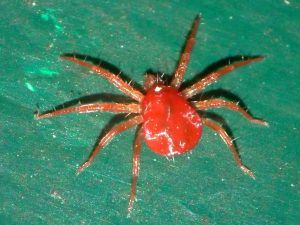 It can be wetted at night by sprinkling to maintain humidity.
It can be wetted at night by sprinkling to maintain humidity.
To combat a spider mite infestation, an extract of garlic and chili can be applied, although if the plant is severely affected, it is best to remove it to prevent it from spreading to other plants.
White fly
Spray the underside of the leaves with 1% potassium soap with rain or distilled water.
thrips
To combat thrips, a combined application of neem extract and potassium soap is recommended.
powdery mildew
It is best to install a drip irrigation system and apply horsetail as prevention.
It also works to eliminate weeds and crop residues, and favor the ventilation of the crop.
Mildew
To combat it, it is recommended to eliminate weeds and crop residues, as well as to avoid excess humidity by promoting adequate ventilation of the plant.
Affected leaves should be removed. Horsetail extract can also be applied.
Varieties and types of zucchini
If what you need is to delve into the different types of zucchini that we can find and choose which one you are interested in planting in your garden, we recommend that you take a look at this article

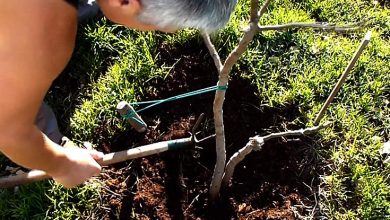
![Photo of Potted Olive Tree Care: [Soil, Humidity, Pruning and Problems]](https://www.complete-gardening.com/wp-content/uploads/2022/08/potted-olive-tree-care-soil-humidity-pruning-and-problems-390x220.jpg)

